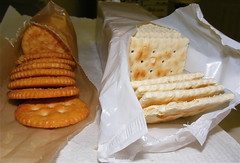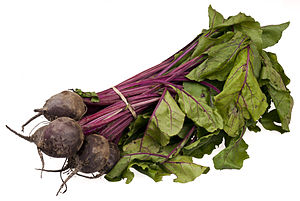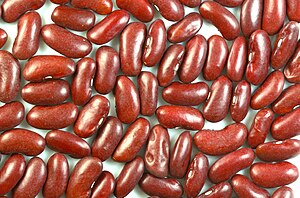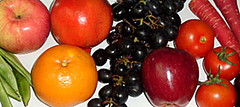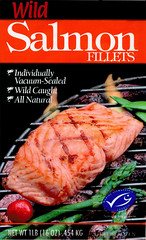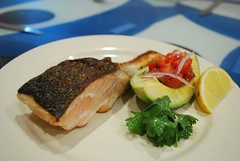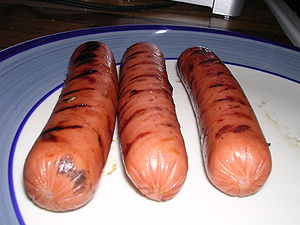Think of baseball, and many things come to mind - warm weather, the spirit of competition, and of course, stadium food. This makes it a great theme for a 4th of July picnic. Ballparks aren't the only places you can enjoy hot dogs, hamburgers, nachos, fries, peanuts, popcorn, cotton candy, and ice cream treats, though. Choose a baseball theme for your next picnic and enjoy the spirit of the sport as well as the tasty food we all know and love. Here are a few ideas for bringing the ballpark to your picnic:
Hot Dogs, Get Your Hot Dogs
Let's start with inside the stadium. When you walk through those gates, the first thing you want is to find the food stands. Those hot dogs are calling your name. Or maybe it's a nice juicy hamburger or hot Italian sausage with the works. For your baseball themed picnic, these are the classics.
No matter where you picnic, in your backyard or at a neighborhood park, you'll probably need a portable grill. This will allow you to cook hot dogs, sausages, and burgers to perfection. Bring along plenty of mustard, ketchup, relish, diced onion, and pickles for a real ballpark experience. Don't forget to grill up some onions and peppers, too, in order to complete the ballpark concession stand favorites.
Beyond the traditional hot dogs, sausages, and hamburgers, you have nachos. The easiest way to provide this classic ballpark snack is to buy nacho cheese sauce. You'll find it in cans in your grocery store. Bring a grill-safe dish to heat the sauce and pour over tortilla chips in individual paper bowls. Top with jalapeno peppers if desired and serve.
Peanuts, in the shells, of course, and popcorn are classics that can easily be added to your picnic. Put a cup or two of unshelled peanuts in small paper bags and leave them around the table for guests to help themselves. Fill bags with popcorn, too. These are simple snacks, but because they are classic ballpark fare, they are a must.
Don't forget Cracker Jacks. If you want to make your own, just follow any simple caramel corn recipe, add nuts, and you have another classic treat. Cotton candy can be purchased in plastic bags in most party stores or candy stores. These bags of cotton candy are specifically made not to melt, so they make a fun addition to a baseball theme party. Then, of course, there are the pretzels. Big, soft pretzels are great if you can make them, but if not, bags of pretzels will satisfy your guests as well.
Beyond the Basics with the Tailgate Pros
Not everyone who goes to a baseball game grabs a hot dog, a bag of peanuts, and takes their seat just in time for the first pitch. Tailgate party veterans know a thing or two about enjoying the day with a variety of foods, as well as how to pack the right foods for a whole day of outdoor fun at the ballpark.
Presuming you have access to a grill, other easy ideas for main courses include chicken drumsticks and wings, turkey legs, and even ribs. You could dice the meat and make kabobs, or add a marinade or glaze and grill the legs, wings, or ribs with fabulous results.
Chili is another classic tailgating dish that actually does double duty. A nice big bowl of chili is a filling dish all on its own. But, if your heart's desire at a ballpark is to eat a hot dog, why not turn it into a chili dog? With a sturdy bun, grilled hot dog, a generous dollop of chili, and a sprinkling of diced sweet onion, you've got another ballpark classic.
You also will never go wrong with great classic sandwiches. Build stacks of sandwiches that include anything from tuna, chicken, and egg salad, to cold cuts, cheese steak, hoagies, clubs, and grilled cheese. Use your imagination to add a few extra ingredients and watch your picnic guests devour every last bite.
Fresh fruit and vegetable salads aren't out of the question, either. As with other picnics that feature similar foods, you want to include bean salad, potato salad, coleslaw, watermelon, and vegetable and fruit salads that are convenient to carry along to a baseball picnic. Stick with the classics mentioned to keep the old time ballpark theme going.
Expanding on the basics within the stadium is what tailgating is all about. Rather than serve simple nachos, how about throwing in everything but the kitchen sink? Include ingredients in your 'super nachos' like black olives, shredded cheese, sour cream, fresh tomatoes, hot or mild peppers, and maybe some fresh basil, cilantro, or parsley. Bring along your favorite salsa to spoon on top as well.
For dessert, keep it traditional and simple. Make lemonade popsicles and popcorn balls. Of course America's favorite pastime deserves America's favorite pie – apple. Another tailgater's trick is to make individual apple pie 'pockets' rather than try to serve slices from a full pie. Be sure to have ice cream along, or even the classic slice of Cheddar cheese.
Set the Stadium Stage
There are many ways to set the mood for a baseball themed picnic. To begin, you'll certainly want to play the part of true baseball fans by bringing bats, balls, mitts, jerseys, and plenty of team spirit along. This works great for 4th of July celebrations if you have family in town visiting, and the kids are sure to have a great time too.
Set up a diamond, even if it can't be very big, and invite everyone up to bat at least once. Use whiffle balls so all ages can play. If you don't have enough people to divide into teams, play a sort of scrimmage where everyone gets a turn up to bat, then goes to the outfield after they get home or they are called out.
The table and food service should be very, very simple. As in a stadium, everything is served in paper dishes. Condiments are in big containers next to the food. Everybody helps themselves to drinks. Put drinks, salads, and desserts in coolers and make everything easy to grab. You can also find sports-themed serving dishes, like little plastic baseball caps, in most party stores if you wish to use them.
Decorate with baseball memorabilia, caps, and equipment if you have it. Set up a simple scoreboard using posterboard with cut out numbers. Be sure to have a radio with a game playing in the background if you can. And don't forget the seventh-inning stretch! Write up the words to the song “Take Me Out To The Ballgame” on a board so everybody can sing along.
As you can see, a baseball theme for your 4th of July picnic is a great way to create family fun, camaraderie, and competitive spirit that brings people closer together. Of course, it all starts with our favorite ballpark food. Use these simple suggestions to put together a memorable event that will leave everyone satisfied as they leave your 'stadium.'
